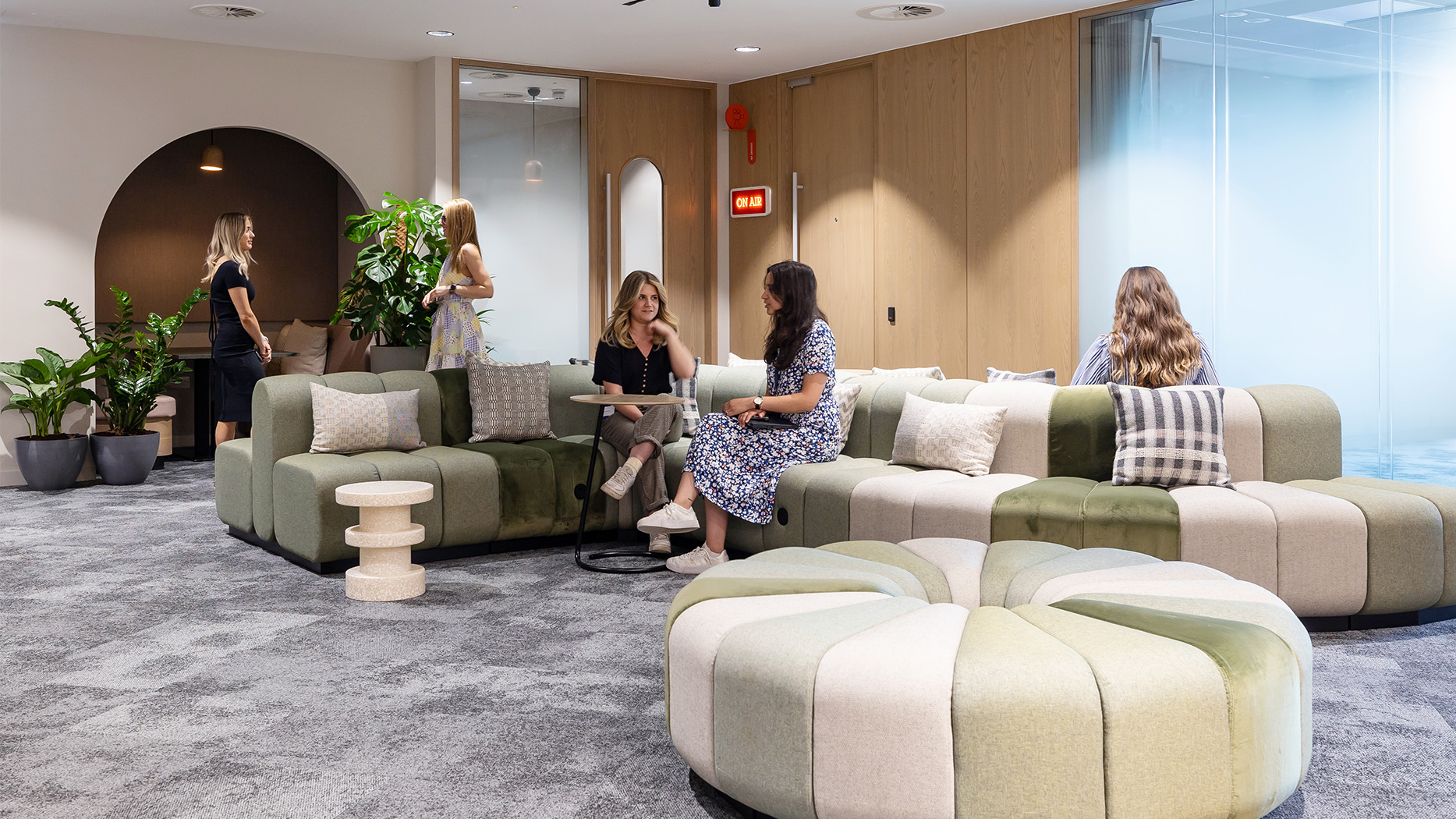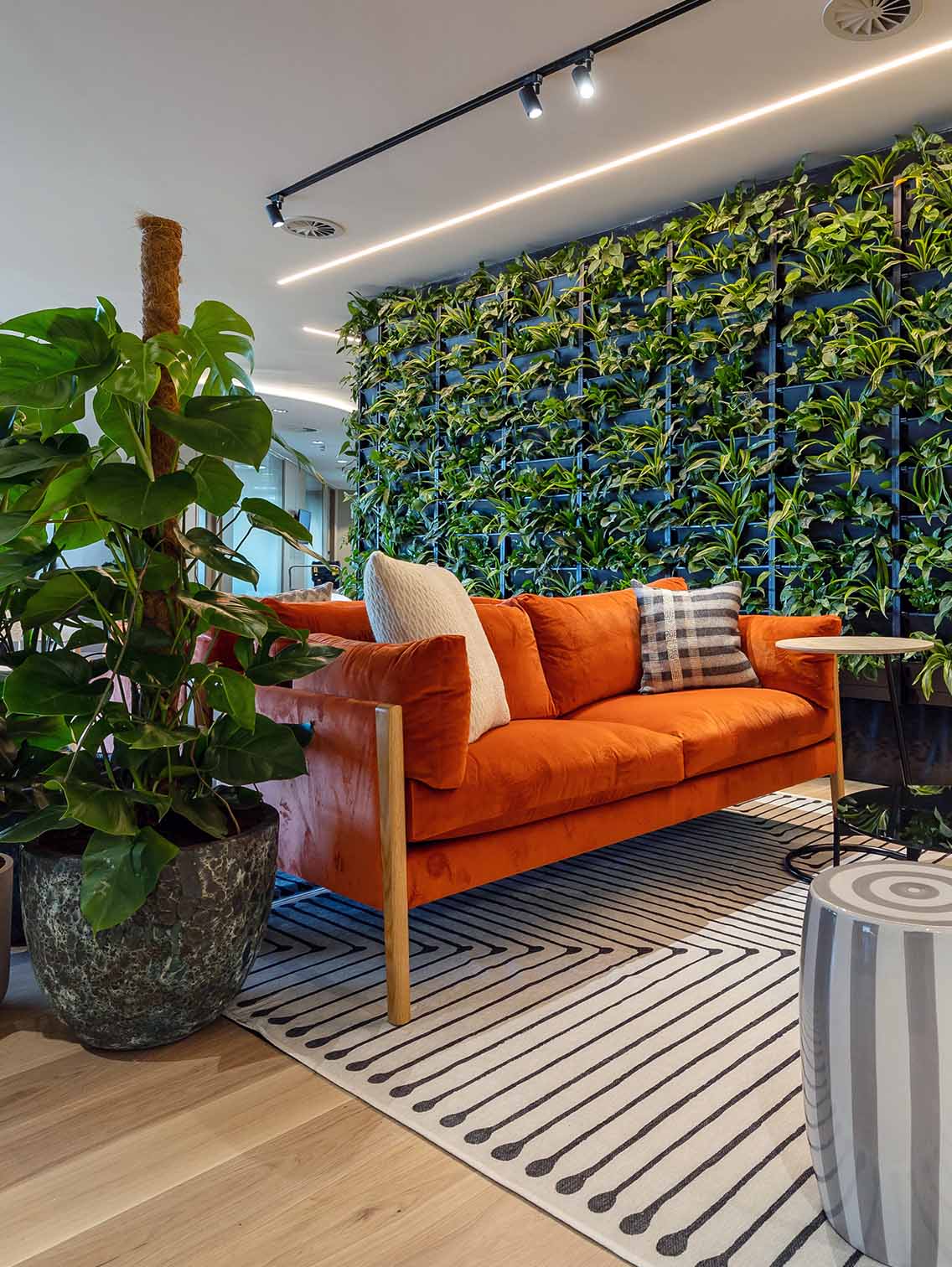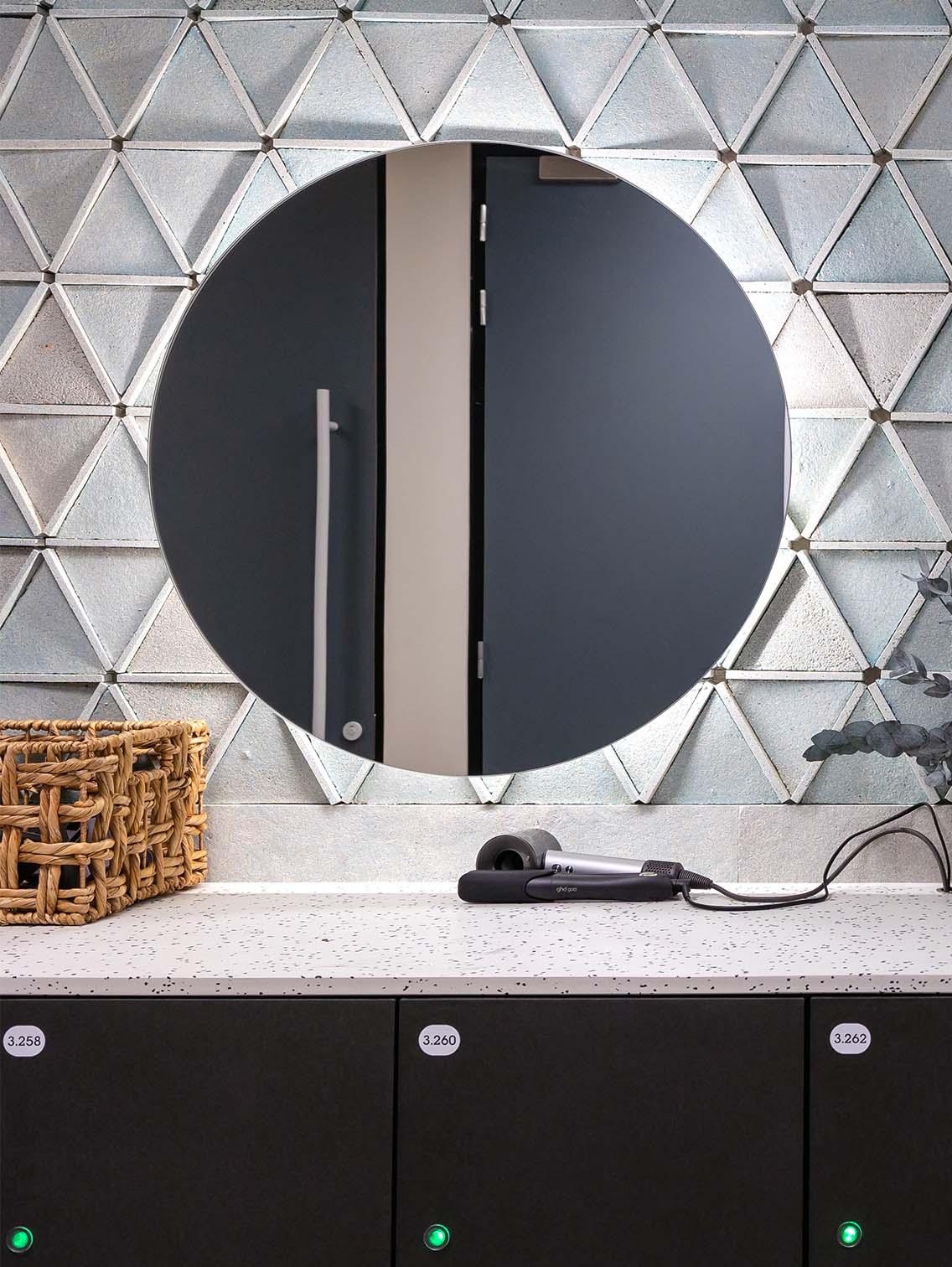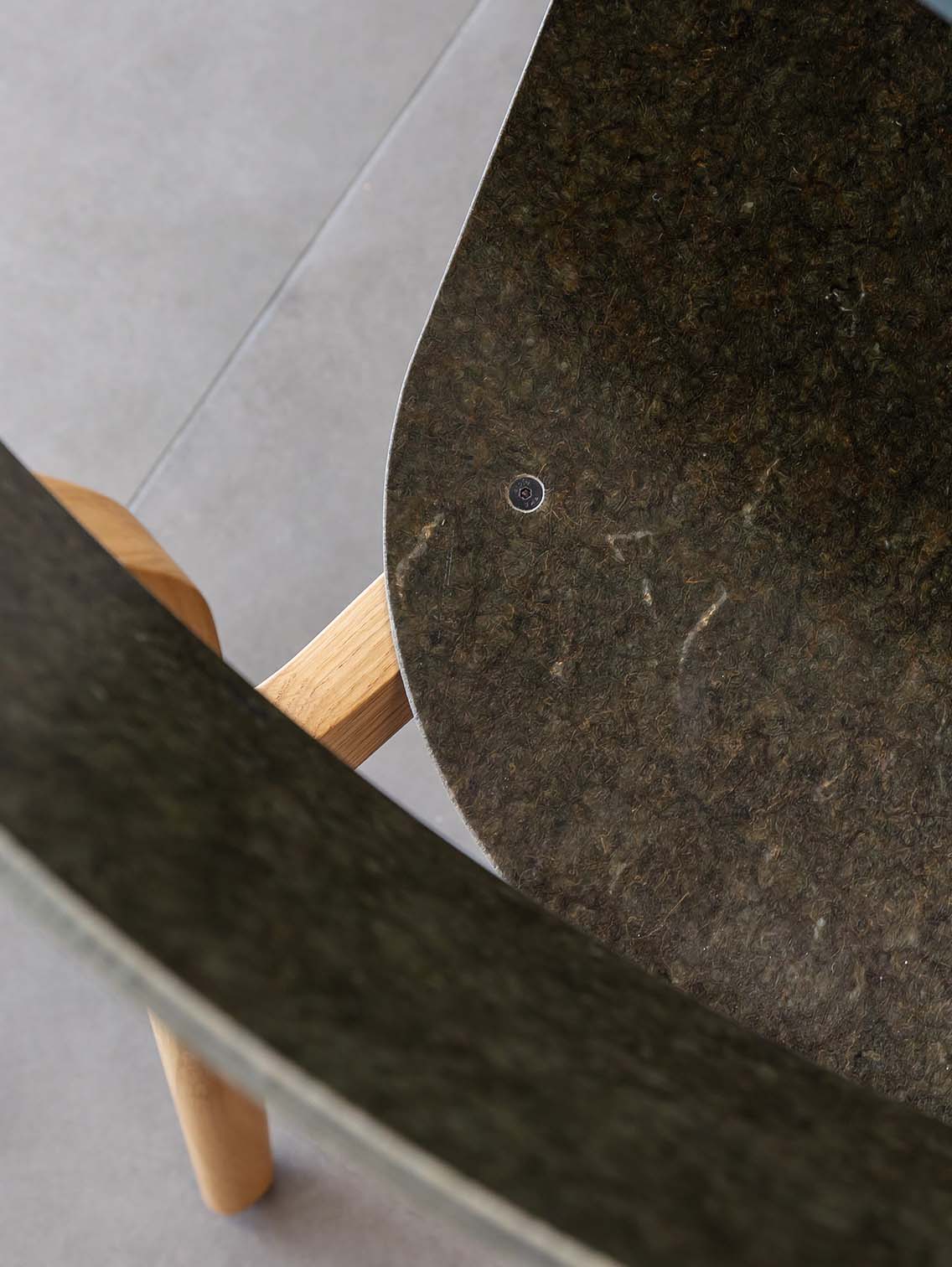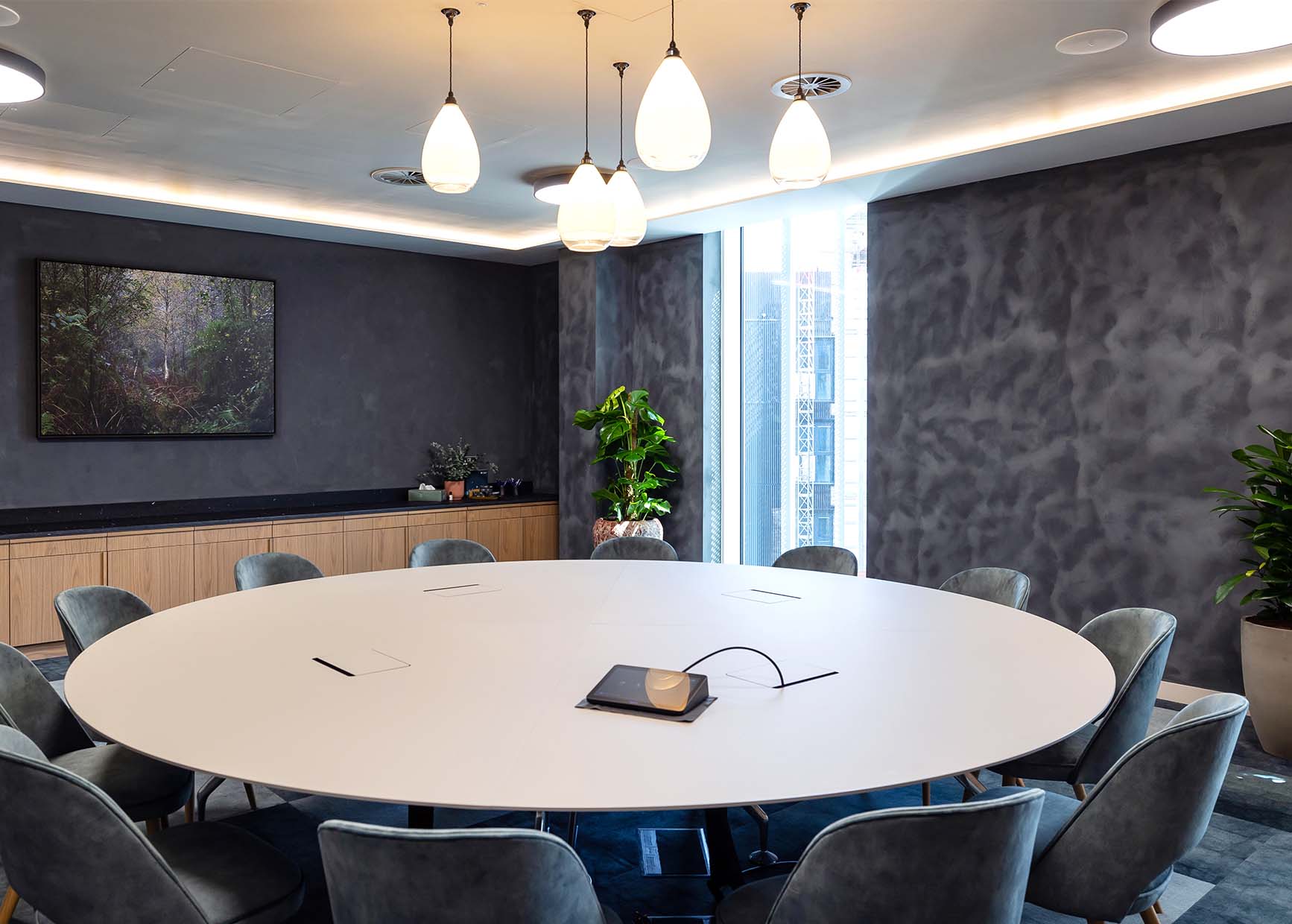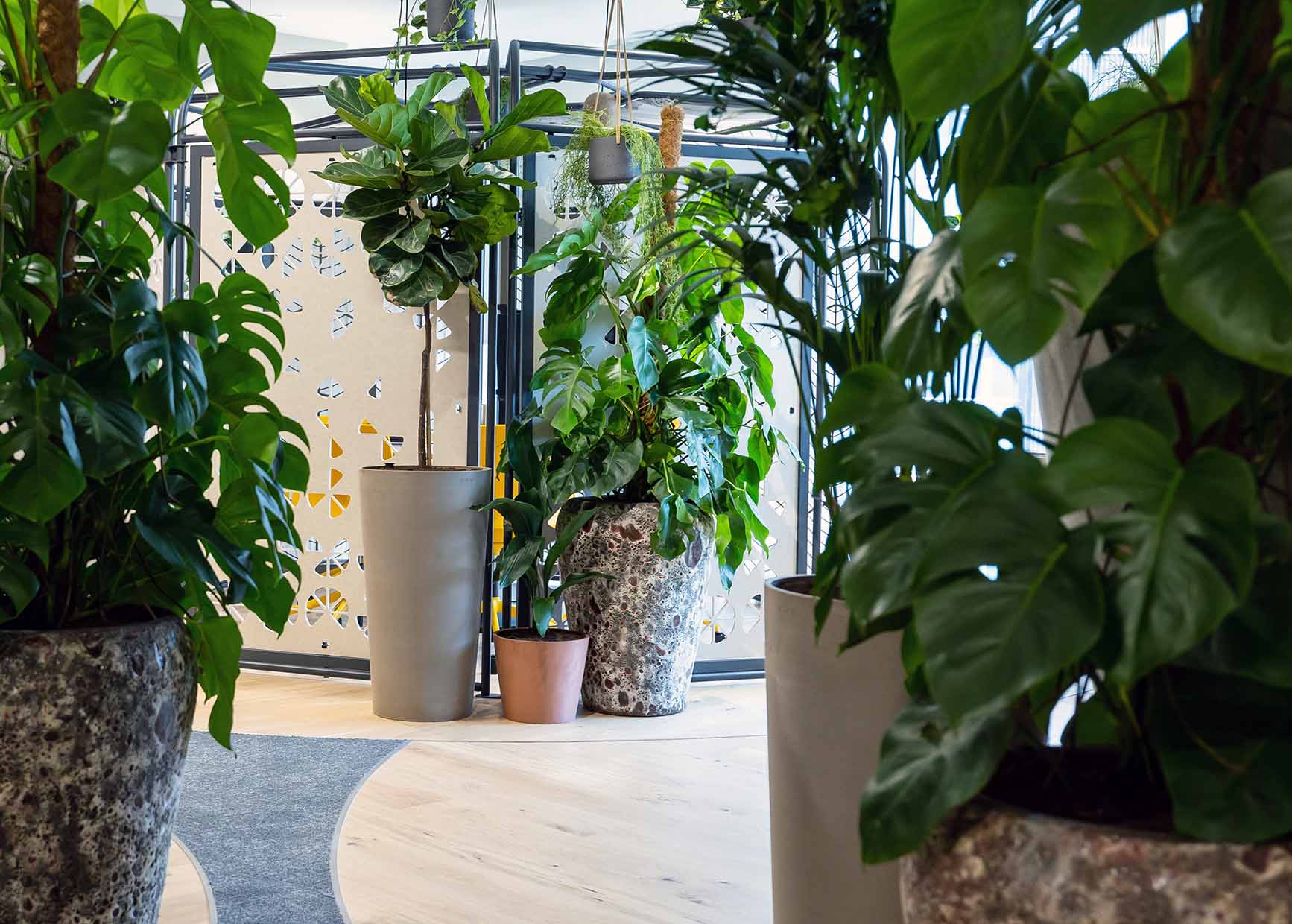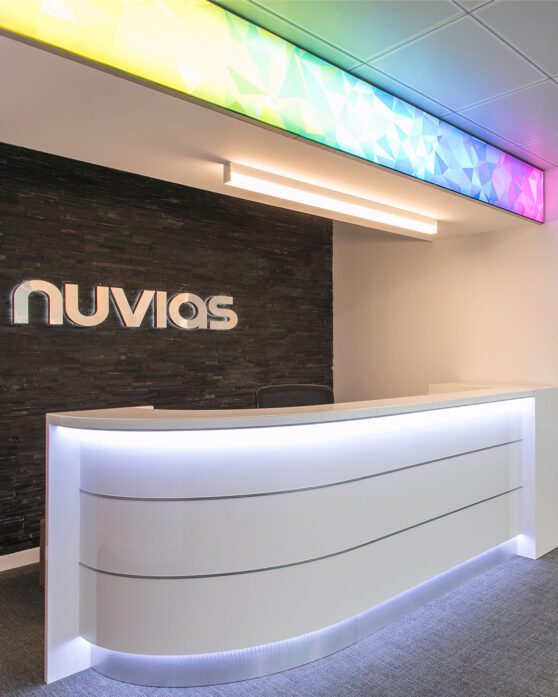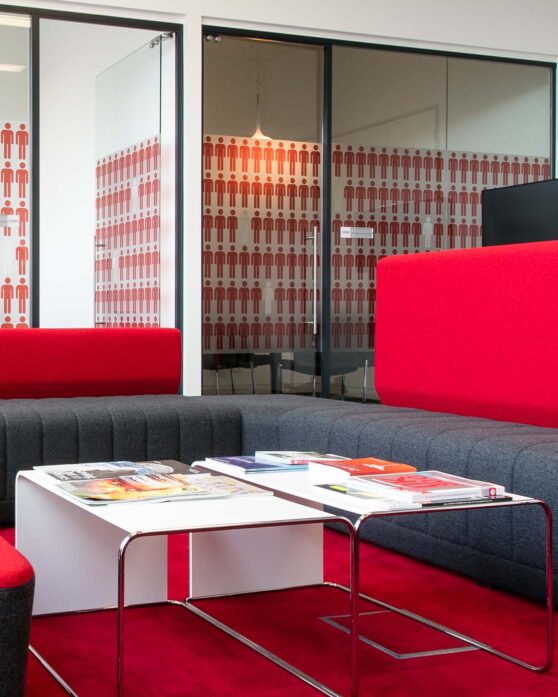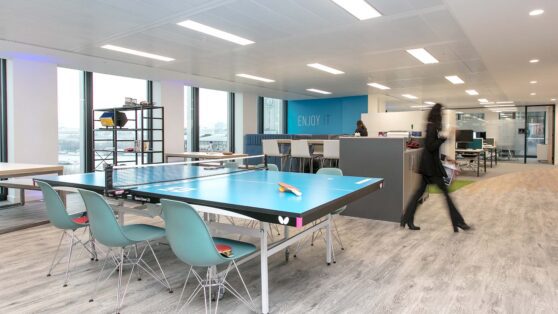From the base build to the scatter cushions, sustainability factored into every decision made on this project.
When it came to creating a future-facing workspace for their people, sustainability was one of Osborne Clarke‘s key priorities. It couldn’t be a bolt-on: the issue had to be approached in a genuine and authentic manner and align with Osborne Clarke’s key values.
We adhered to the WELL Building Standards (WELL) and BREAAM sustainability criteria and used our “Intelligent Impact” model to define what a genuinely sustainable approach to the project looked like; this led to a local-first approach and a strategic framework from which to make choices.
We delved into the balance of sustainable decision-making. Durable materials were selected for their longevity, feeding into the circular economy; e.g. using quartz worktops, which are more intensive to manufacture than some alternatives but more durable – and therefore longer-lasting in high-traffic environments.
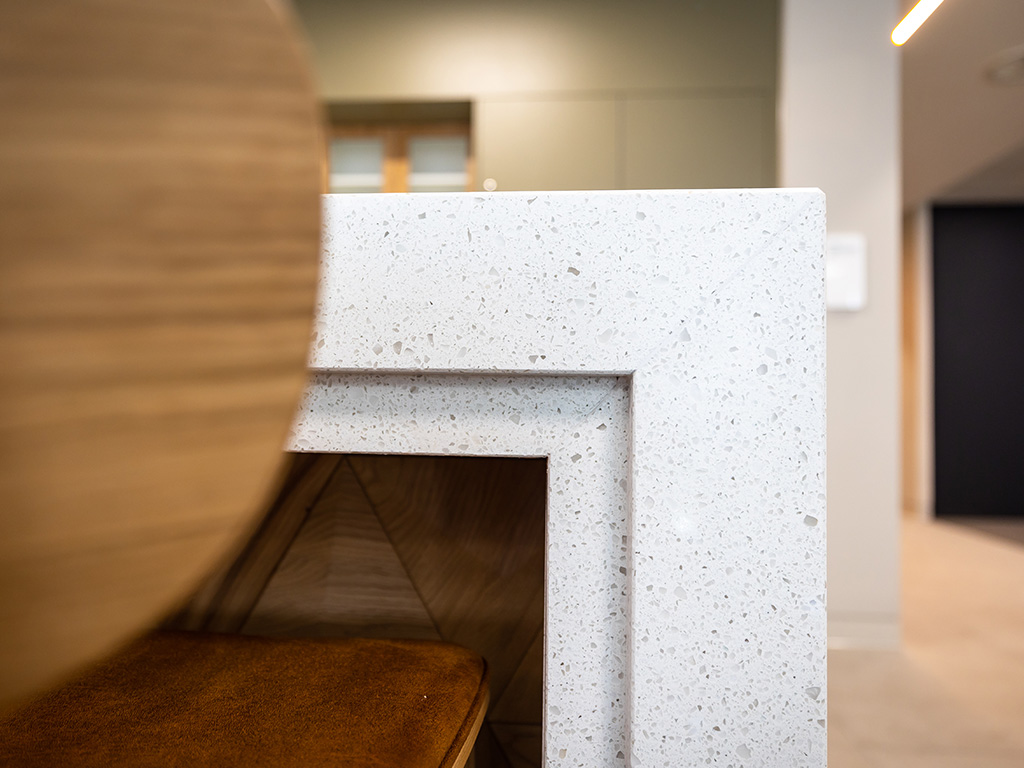
We couldn’t have done it without Interaction. Our partnership has been fantastic. It’s been an eye-opening journey designing our new Halo office, and it shows that we can put sustainability at the heart of the brief and come out with a fantastic end result.
Mary Lavin, Sustainability Manager
Osborne Clarke
We prize partnerships
Together we’re more than the sum of our parts
We undertook a supplier-wide audit, investigating every proposed product, and went on to develop an in-depth sustainability matrix that drove our decision-making. We also spoke to small, independent suppliers, who may not have offered the same certification but could prove their value for inclusion through other methods, such as sourcing reclaimed wood and building bespoke pieces by hand in local workshops. We sourced local suppliers, such as Bristol Weaving Mill, who developed bespoke patterns for Osborne Clarke which featured across more than 200 sustainable handmade, bespoke throws and cushions. They support locally-based reforesting initiative Co-forest, and are able to trace the yarns they work with back to their source and, in some instances, to the very backs of the animals they came from.
A locally-made, bespoke hanging glass instalment is a key feature of Halo’s jaw-dropping client reception, with 58 hanging pieces.
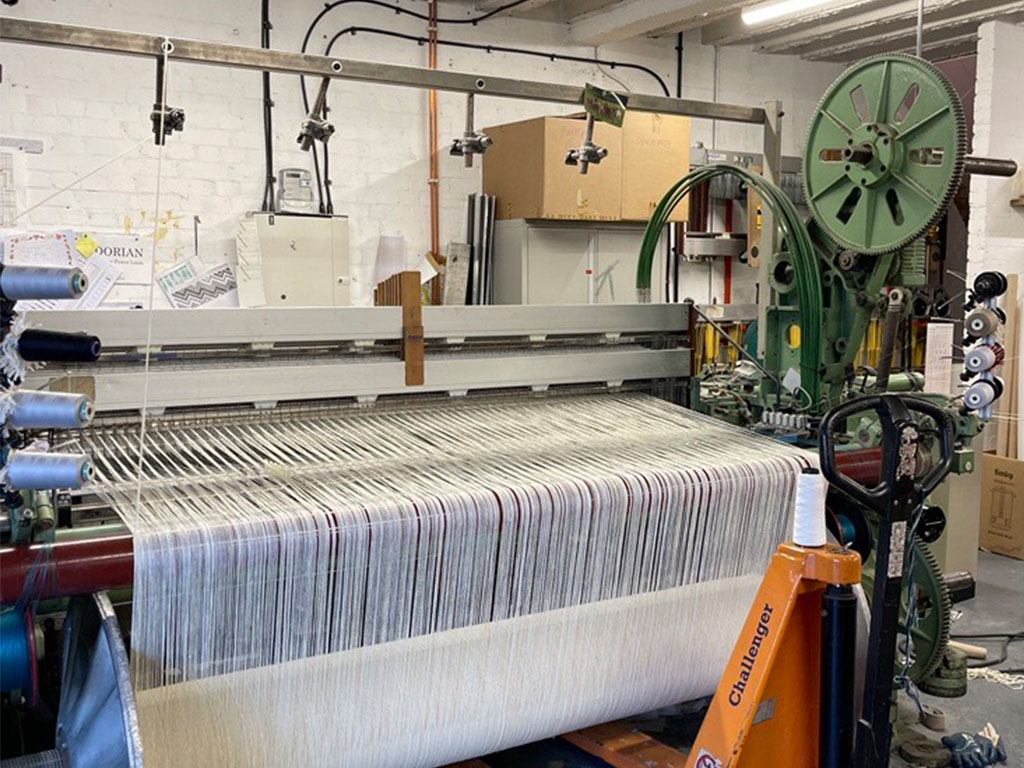
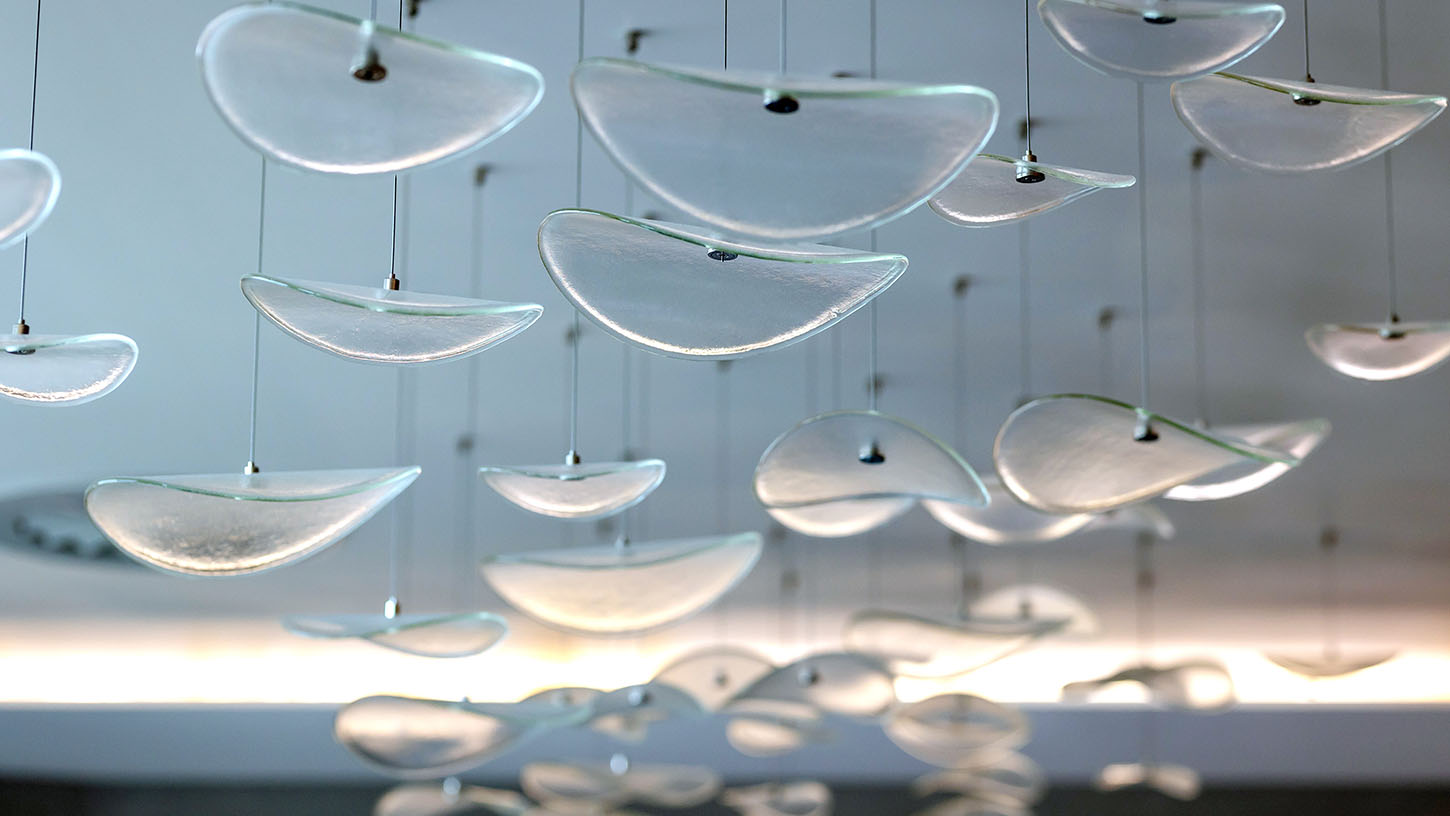
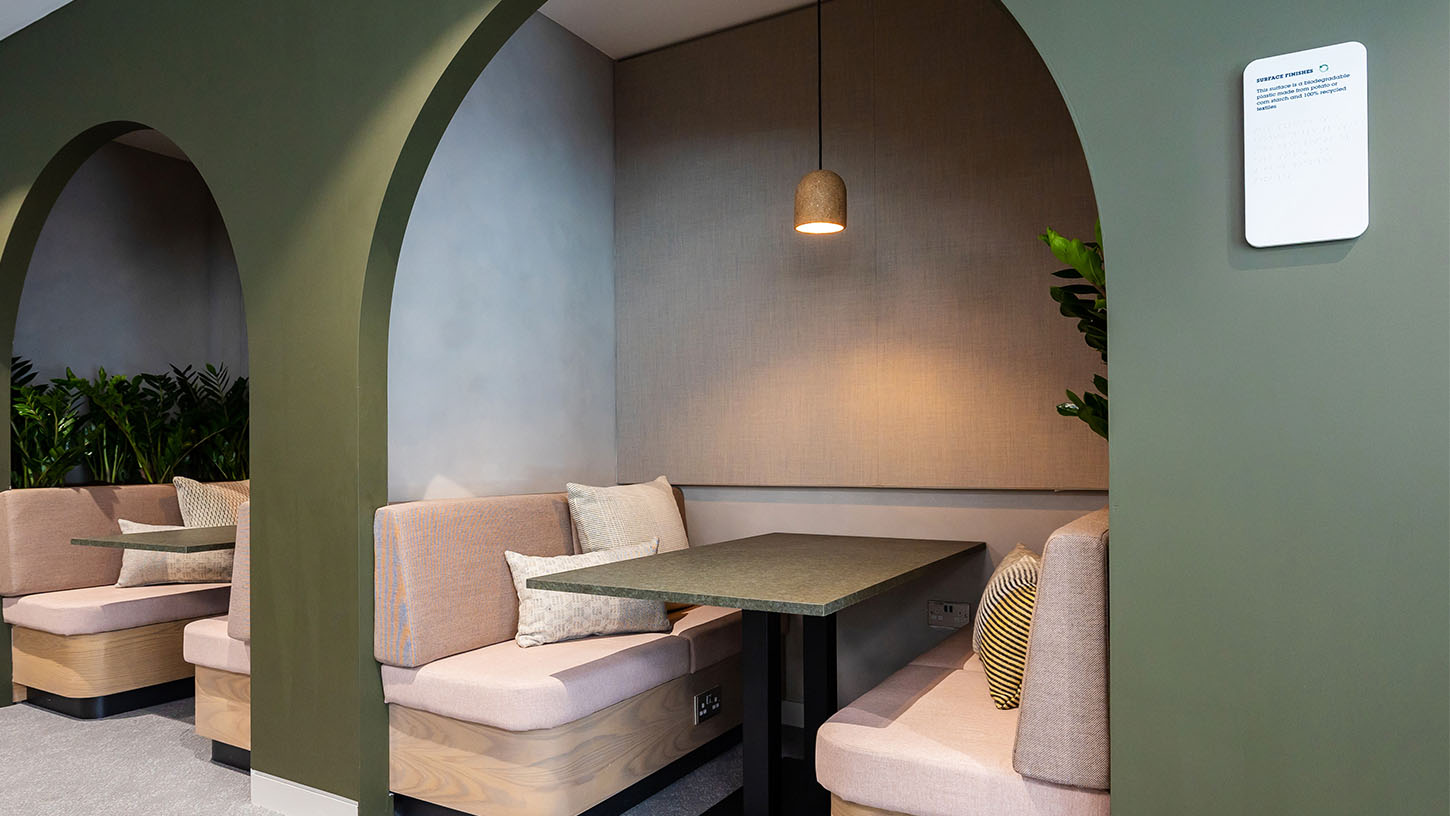
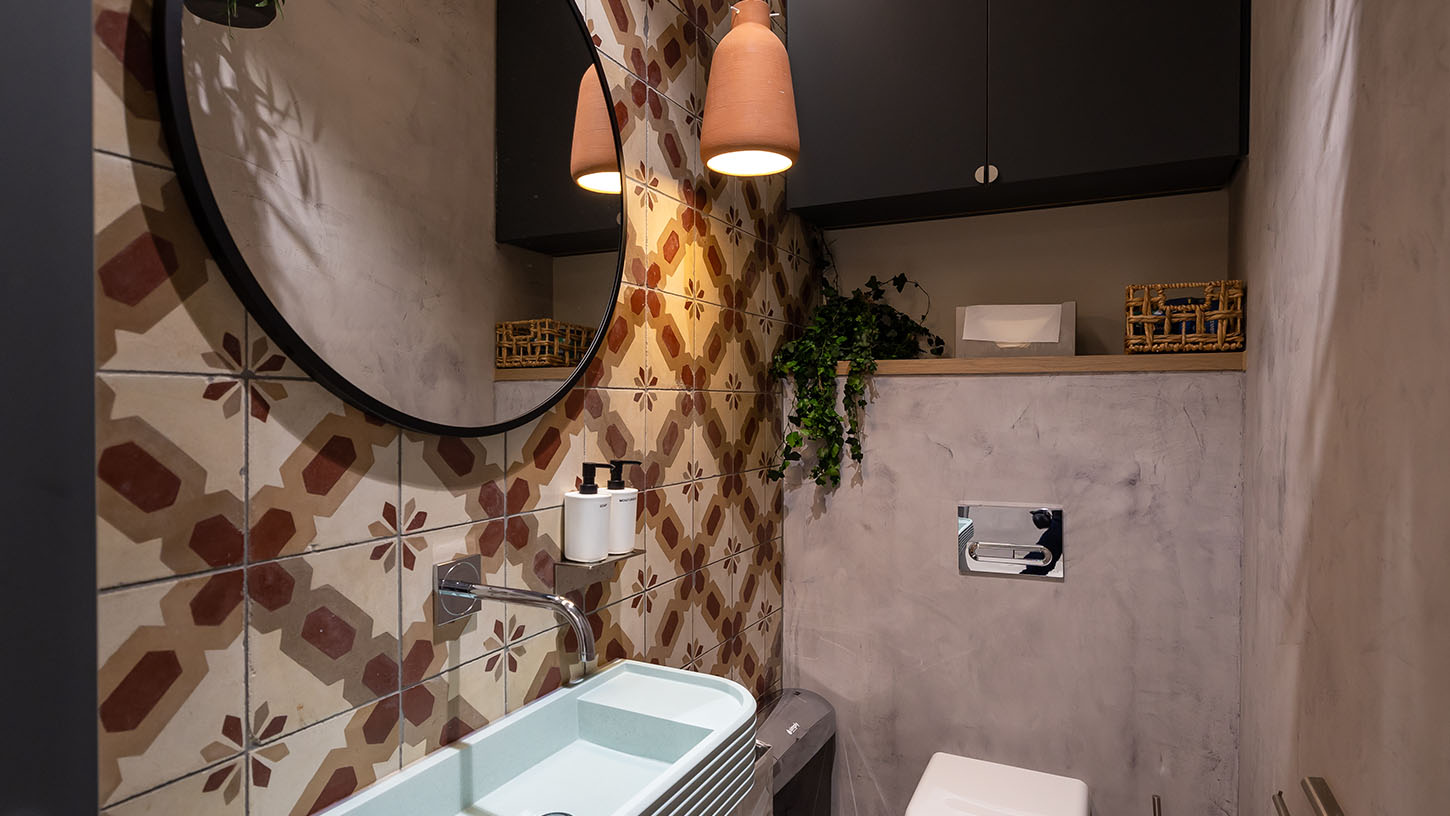
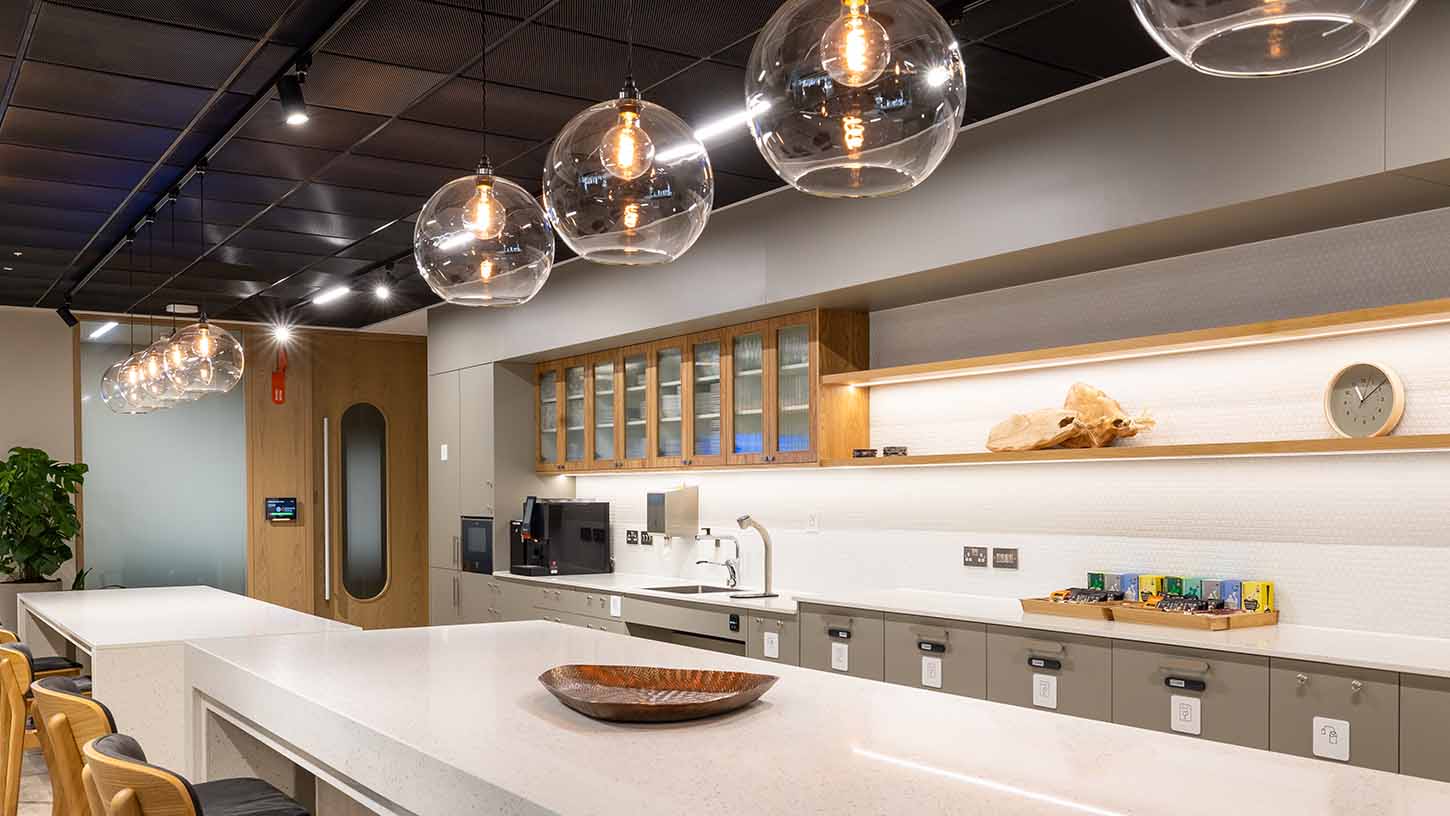
One plant at a time…
Circular economy…
We also made the office foliage do some heavy lifting. If properly maintained, office plants can reduce indoor temperatures by as much as 10 degrees, saving energy used by air conditioning. We used over 1,000 plants throughout – and not a single one in a plastic pot. Instead, the pots were 100% recycled, made locally from materials such as coconut.
Around 16 million tons of orange peel waste is produced yearly from the juice industry. We sourced lamps made from orange peel, with each containing about 20 squeezed oranges. These play a role in the circular economy, being compostable at the end of life. Biophilia serves the innate need to be around nature by incorporating natural elements in office design, a huge part of which is using natural materials like orange peels.
Reclaimed army uniforms and denim have been recycled into furniture pieces used throughout Halo. This process takes a cradle-to-cradle approach which ensures that products remain in a continuous circuit to eliminate waste, are locally sourced and FSC (Forest Stewardship Council) certified.
We have also used recycled plastic on surfaces in Halo’s meeting and project rooms. These locally manufactured surfaces contain 100% recycled content and produce very low volatile organic compounds, or VOCs, which are gases that are emitted into the air from products. Fully recyclable at the end of their life, these plastic finishes are an important part of sustaining the circular economy, one of our key priorities for the Halo fit-out.
All finishes, fittings and furniture were researched and proposed in line with a set of distinct criteria. WELL Building Standards acted as a guide for the approach in principle, so as to allow flexibility for excluding elements that Osborne Clarke felt weren’t appropriate for them. This has resulted in a scheme that isn’t just ‘ticking boxes’, but represents a broader overall desire to be environmentally conscious.
Throughout the workspace braille signage explains the features contributing to the sustainability of each fitting with copy written by the Osborne Clarke marketing team.
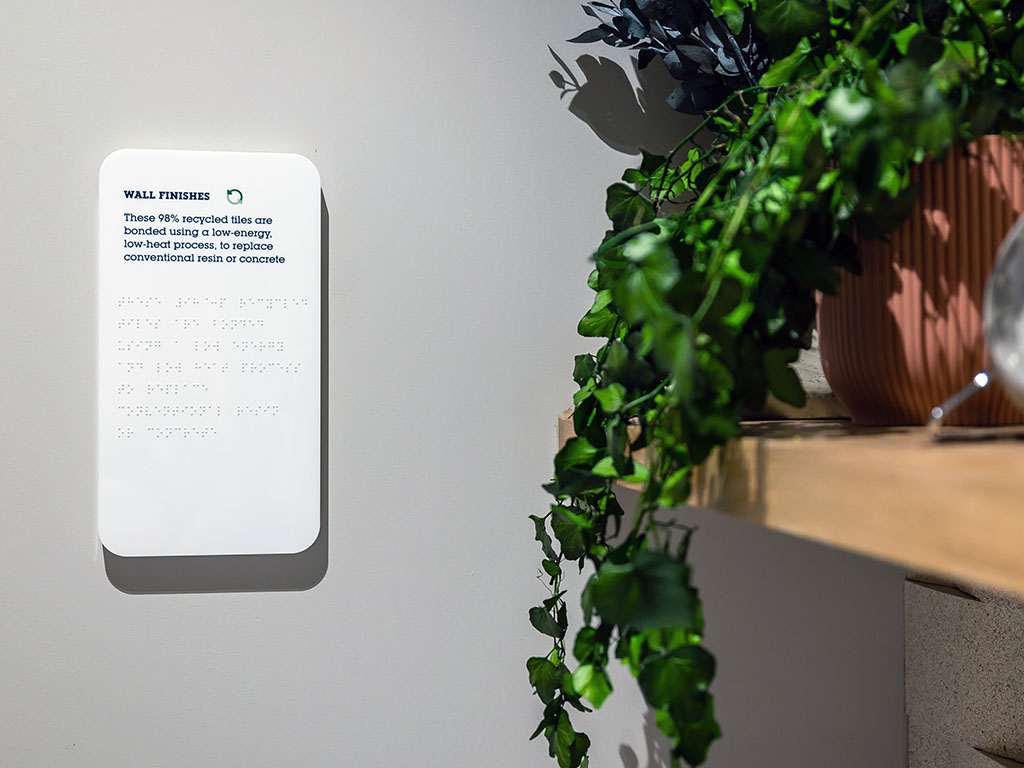
Design Features
Details that matter.
A living wall of planting brings the outside in, as well as indoor gardens throughout the space. Active travel facilities include vanity areas with sustainable finishes such as these triangular tiles made of 99% recycled content. Other sustainable finishes include recycled army uniform chairs and low V.O.C limewash paint.
What next?
There’s so much more to see
Osborne Clarke needed a people-focused and sustainable office to bring their 780 employees together in the heart of Bristol. We created a cutting-edge workspace that serves as a best-in-class example of how to design for both people and the planet.
An end-to-end solution
In addition to sustainability, this project involved many of Interaction’s key services:
Full case study
The end result is the epitome of a destination office – one designed to delight existing Osborne Clarke employees and make the best talent in the market turn their heads.
Case Studies
If you liked that, you’ll love these
Discover how reevaluating their workplace strategy helped these businesses reach new heights
Time to revolutionise your workplace?
We’d love to hear your plans. Get in touch with Charlie to see how we can bring them to life
